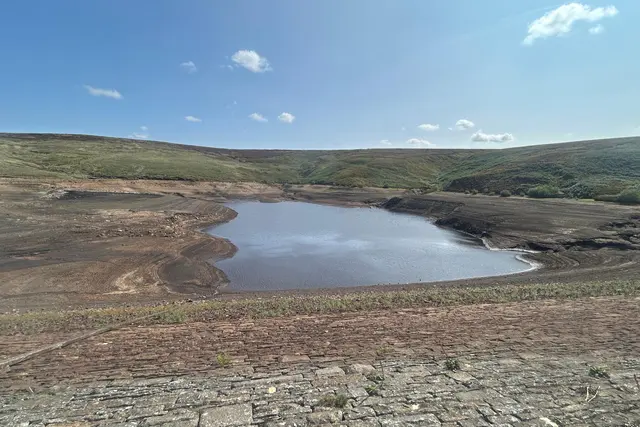By Graham Chalmers
Copyright thescarboroughnews

Patches of heavy rain in parts of Yorkshire over the last seven days have helped to slow the fall of groundwater and reservoir stocks.
But the utility giant says levels are still declining, as water demand from customers remains at more than 1.2 billion litres per day.
Yorkshire’s reservoir levels now sit at 30.6%, dropping 2.01% from last week, well below the 71.7% average for this time of year.
This follows the UK receiving just 44% of its expected annual rainfall so far this year, compared to a typical average of 67% by this stage last year.
Dave Kaye, Yorkshire Water’s director of water services, said: “Our reservoirs are feeling the impact of drought in the region, following the driest spring and warmest summer on record.
“While we’ve been starting to see a little more rain with the beginning of autumn, the majority has been taken up by the extremely dry ground, and plants and trees.”
Yorkshire’s reservoir stocks have been decreasing since late January due to the dry and warm weather.
In June, the Environment Agency officially declared a drought across the county.
After a hosepipe ban was introduced across Yorkshire in July, domestic water usage decreased by 10%.
But neither this, not recent rainfall, has enabled Yorkshire Water to loosen it restrictions.
Instead, it is now resorting to the use of permits issued by the Environment Agency allowing it to reduce the amount of water released from its reservoirs into local rivers to maintain river health.
Dave Kaye said: “The rain has helped river and groundwater levels in some areas, which will allow us to abstract from watercourses to take the strain off our reservoirs.
“This, combined with drought orders and permits that have been granted on the Ouse, Wharfe and 19 reservoirs in the south and north-west of the region, will help to reduce the burden on reservoirs and enable reservoirs to recover quicker in the autumn and winter.”



